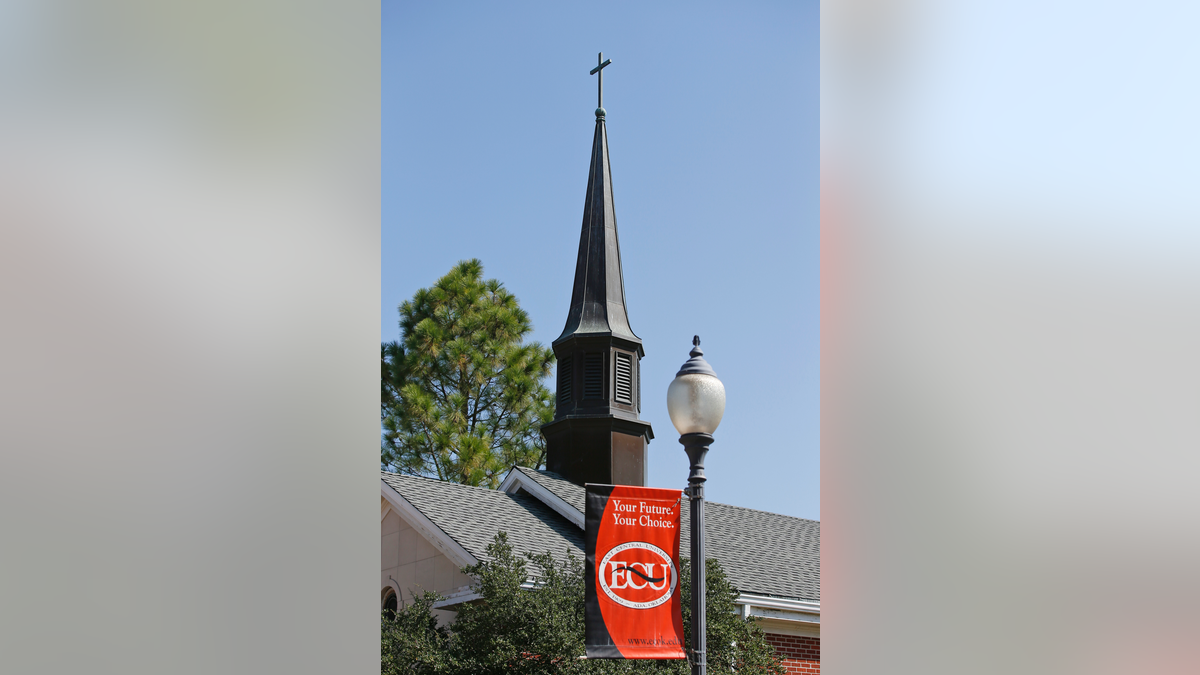
ADA, Okla. – A small chapel nestled on a university campus in a rural central Oklahoma town is at the center of a firestorm over the use of religious symbols on public property after a Washington, D.C.-based group insisted that a cross be removed from atop its steeple.
At first, East Central University — a public university with 4,000 students in Ada, about 80 miles (130 kilometers) southeast of Oklahoma City — complied with the request from Americans United for Separation of Church and State, removing Bibles and other Christian-themed items from the colonial-style chapel that was donated by a longtime regent in 1957. But before the cross could be taken down, the matter had drawn the attention of religious leaders as well as Oklahoma's Republican attorney general, who is running for re-election next year.
Now the university is letting Attorney General Mike Hunter handle the matter while it waits to find out whether Americans United for Separation of Church and State will sue.
While some conservatives see the letter that Americans United sent this summer as an effort by out-of-state atheists to impose their values on the Bible Belt, the group says it took action after someone in the community raised concerns and that it's just asking the university to follow the law.
"The display of a Latin cross on government property violates basic Establishment Clause rules," the letter from Americans United states, referring to the First Amendment of the U.S. Constitution, which prohibits governmental entities from endorsing a religion. "Please remove or cover the religious displays and items."
Many students, however, said the chapel should remain as is.
"We're in the Bible Belt of America, and this is a Christian-background community," said 20-year-old Caleb Watson, a sophomore from the nearby community of Tupelo. "You can go to another country and they're going to express their religious values and expect you to assimilate."
It's not the first time religious artifacts at a public university in the U.S. have sparked controversy. The president of the College of William and Mary in Virginia put one of the nation's oldest schools at the center of the church-state debate when he ordered a cross removed from its historic chapel in 2006 in an attempt to make the chapel more welcoming to students of all faith. After a public backlash, the cross was returned and placed in a glass case.
Still, Alex Luchenitser, an attorney for Americans United, said the case is unusual.
"We've received complaints involving public schools displaying religious items on school property, and we've written complaint letters, but often the religious items were removed without having to go to court," said Luchenitser, adding that his group is still deciding whether to sue.
After a local pastor and founder of a Christian radio network jumped into the fray, the university heard from people across the country, said East Central spokesman Brian Johnson.
In a video posted live on social media, pastor Randall Christy of Union Valley Baptist Church, said, "They're about to cut that cross off the top of that steeple. They're about to bring a crane in and literally cut it off, and we're not real happy about this."
That's when Hunter stepped in and accused Americans United for Separation of Church and State — which he called "an out-of-state interest group" — of trying to "bully the university and the state of Oklahoma."
"We absolutely reject the demand to remove the cross or other religious material or icons in the church," he said.
The university now refers questions about the chapel to Hunter, who has promised to defend the university in court if necessary.
But legal experts say religious monuments on government property clearly raise constitutional concerns that the government is endorsing a particular faith. Just last year, Oklahoma's highest court ordered a granite monument of the Ten Commandments be removed from the Capitol.
"The constitutionality of the chapel with its cross and Christian iconography, ironically, depends on whether those symbols have retained their religious meaning, which would make them more suspect, or whether they now come across as more historical or artistic than holy," said University of Oklahoma law professor Joseph Thai. "Controversies such as this one over religious monuments and symbols on public property have spawned litigation across the country, with wins and losses on both sides, stirring up the very kind of religious divisions that the First Amendment was adopted in part to prevent."
___
Follow Sean Murphy at www.twitter.com/apseanmurphy
___
Sign up for the AP's weekly newsletter showcasing our best reporting from the Midwest and Texas: http://apne.ws/2u1RMfv .

